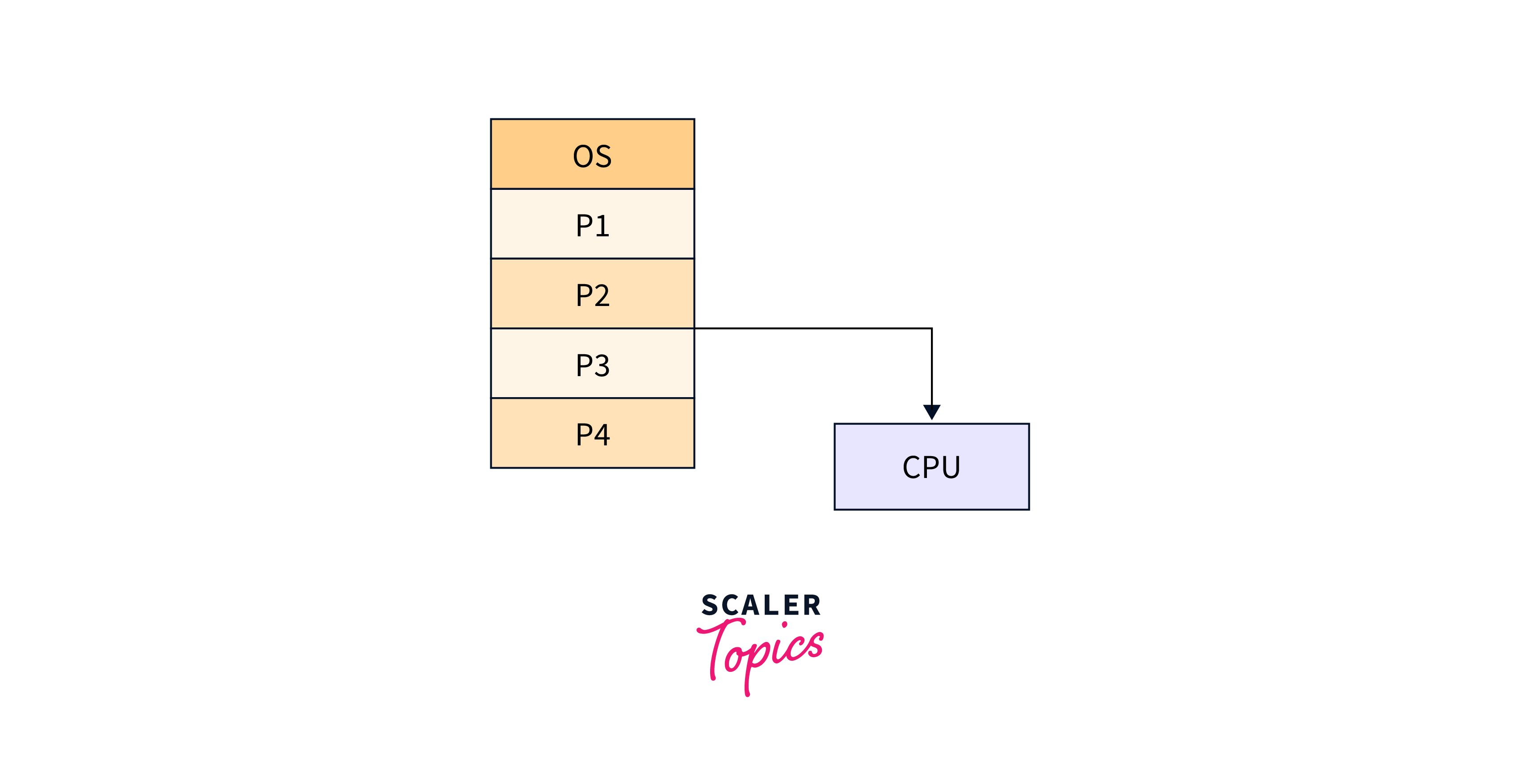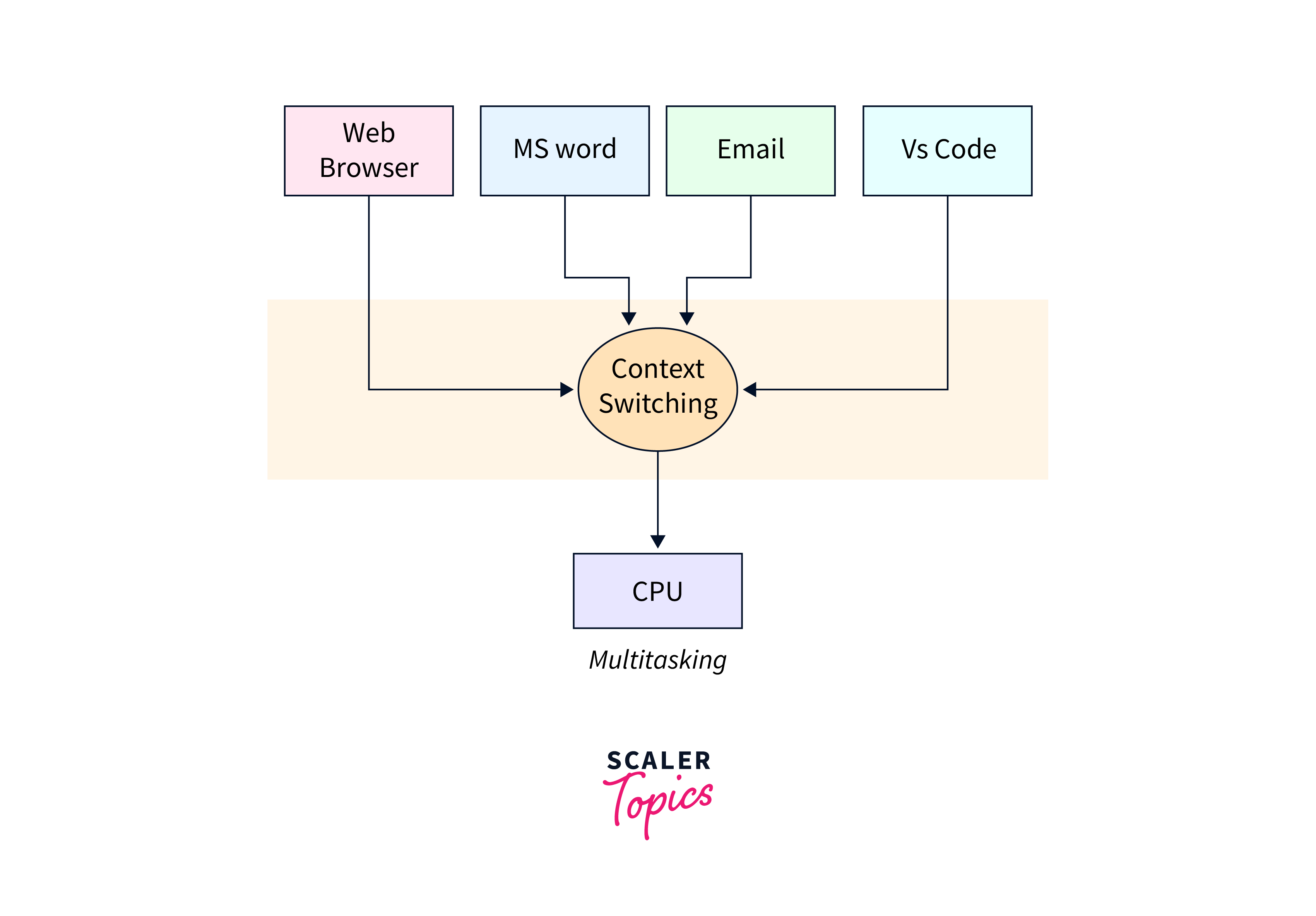Difference Between Multiprogramming and Multitasking
Overview
An operating system that can run multiple programs on a single processor is known as a multiprogramming operating system. If a program has to wait for an I/O transfer in a multiprogramming operating system, meanwhile the other programs use the CPU and other resources of the system for task execution. Multitasking can be defined as the extension of multiprogramming. In multitasking, you can do numerous tasks simultaneously such as playing games and listening to music on the same system. It uses the concept of time sharing to improve the CPU utilization. In this article, you will see what the is difference between multiprogramming and multitasking operating systems.
What is MultiProgramming?
Multiprogramming is the concept of an operating system in which there is more than one program processing in the main memory of the computer system. Multiprogramming helps to improve the CPU utilization because in multiprogramming when one process is waiting for I/O, the CPU can execute another process, hence it increases the overall CPU utilization. In multiprogramming, the operating system arranges the jobs in a manner that there is always a job assigned to the CPU for its execution. Using multiprogramming, you can run multiple programs on a single CPU because these multiple jobs are stored in the main memory of the system.
In multiprogramming, another job will always be ready to make use of the CPU while one job requires waiting time for occupied I/O units. Thus, many different kinds of tasks can simultaneously share a CPU. However, simultaneous job execution is not an essential characteristic of multiprogramming. Therefore, multiprogramming makes better use of the CPU, speeds up the response time, and prioritizes tasks. For an in-depth understanding of Multiprogramming, explore this article by Scaler Topics on Multiprogramming Operating System.
- Example: Let us assume there are 5 jobs namely P1, P2, P3, P4, and P5 as shown below. The execution time of these five processes is 10 ms, 15 ms, 5 ms, 25 ms, and 2 ms respectively. Here considering that processes are getting executed by the FCFS (First Come First Serve) Algorithm.

The process P1 will get executed first then P2 will execute taking the time from 10-25 ms. After that, P3 will get executed taking a time frame from 25-30 ms. Then P4 takes time 30-55 ms and at last P5 will get executed between 55-57 ms. The execution of the processes will take place according to this timeline considering only when there are no interruptions during these task execution. The CPU will sequentially execute all these tasks and move to another task.

What is Multitasking?
Multitasking is the concept of executing more than one job simultaneously in the CPU of your system. In the concept of multitasking, there is a specified time duration assigned to every job. This assigned time duration is known as a time slice. When the CPU spends the time slice for a job, the CPU then gets shifted to another job waiting in the queue. Multitasking is preemptive as it shares common resources such as CPU and memory to run multiple programs in the system. In this manner, multitasking allows you to run numerous tasks simultaneously. Multitasking is a complex theory of operating systems that works based on time slices. Some of the common examples of multitasking are that you can run a music player while surfing a web browser in your system. For an in-depth understanding of Multitasking, explore this article by Scaler Topics on Multitasking Operating System.
- Example: Let us assume there are 3 jobs namely P1, P2, and P3 as shown below. The execution time of these five processes is 12 ms, 18 ms, and 6 ms respectively.

In multitasking, there is a distribution of slice time according to the Quantum period decided. In this example, the slice time is 6 ms. So the CPU will assign 6 ms to all these tasks one by one and keep shifting until all the tasks get executed. The execution of the processes will take place according to this timeline considering only when there are no interruptions during these task execution.

Difference between Multiprogramming and Multitasking
Now, let us see the various parameters that decide what are the differences between multiprogramming and multitasking in the below table.
| Parameter | Multiprogramming | Multitasking |
|---|---|---|
| Definition | It allows the system to use the CPU for many programs at the same time. | It allows the system to use CPU for many programs at the same time with a given fixed time for each of the threads, processes, etc. |
| Objective | It helps in cutting the CPU free time and thus increases the overall CPU utilization. | It helps in cutting the CPU free time and thus increases the overall CPU utilization by dividing the process execution time for each process. |
| Mechanism | In multiprogramming, we use the context switching method. | In multitasking, we use the concept of time-sharing mechanism |
| Job processing time | Multiprogramming needs more time to get the processes executed | Multitasking needs less time to get the processes executed |
| Number of Users | In multiprogramming, there can be only one user at a time. | In multitasking, there can be more than one user at a time. |
| Efficiency | Multiprogramming is less efficient as compared to multitasking. | Multitasking is more efficient as compared to multiprogramming. |
| Use categorization | Multiprogramming is not further categorized. | Multitasking is further categorized as single-user and multi-user. |
| CPU switching | CPU is switched between the numerous processes swiftly in a multiprogramming operating system. | CPU is switched between the processes of many programs swiftly in a multitasking operating system. |
| CPU requirement | There is only one CPU involved in the multiprogramming operating system. | There are multiple CPUs involved in the multitasking operating system. |
FAQs
Q: Which is better multiprogramming or multitasking?
A. Both are the concepts of the operating system that define how the CPU utilizes memory and space to complete the processes in your system. Both have their advantages and disadvantages. Choosing one between them can depend on the need and use case of the user.
Q. What is the aim of the time-sharing mechanism?
A. The main objective of the time-sharing mechanism is to use the CPU in the best possible way to increase the overall task execution efficiency and increase the system's productivity.
Q. What is the term "context-switching" used in the topic difference between multiprogramming and multitasking?
A. Context switching is defined as the process of changing the state of a process.
Conclusion
- Multiprogramming is defined as the concept of an operating system in which there is more than one program processing in the main memory of the computer system.
- Multitasking is defined as the concept of executing more than one job simultaneously in the CPU of your system. In it, there is a specified time duration assigned to every job and the CPU keeps shifting to the tasks after a fixed assigned time.
- Time slice is the fixed time for which a task is under process in the CPU.
- Multitasking is divided into two categories that are single user and multi-user.
- In multiprogramming, there is only one CPU involved but in multitasking, there can be one or more CPUs involved in the multitasking operating system.
- Interrupts are defined as the signal that is sent by either hardware or software when immediate attention by a process is required. When there is a high-priority job in waiting then it generates an alert for the processor and interrupts the current process.
- Context switching is a process in the operating system in which the context or state of a process is stored for a short period so that it can be fetched again if there is a requirement of this context again during the execution of a task. This feature is found in the multitasking operating system and it allows sharing of a single CPU with multiple processes.
